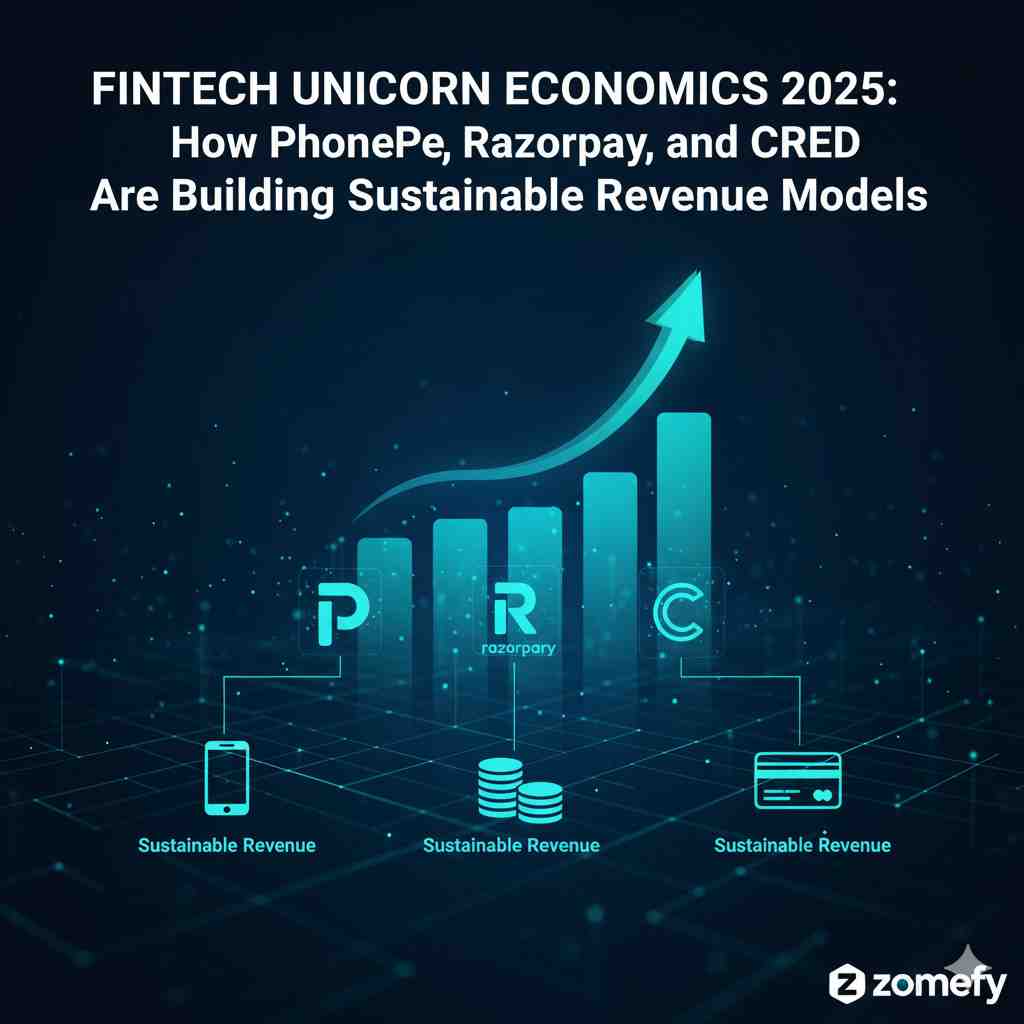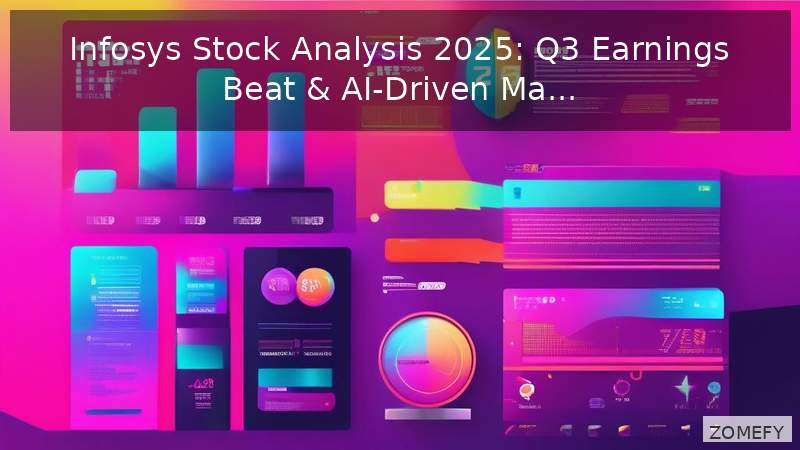IT Sector Outlook 2025: Navigating AI Adoption, Cloud Migration, and Margin Pressures for Sustainable Growth
India’s IT sector is at a pivotal juncture in 2025, shaped by rapid AI adoption, accelerating cloud migration, and persistent margin pressures.
IT Sector Outlook 2025: Navigating AI Adoption, Cloud Migration, and Margin Pressures for Sustainable Growth
What You Can Do Next
- Read the full article for complete insights
- Save for later reference
- Share with others learning about this topic
Image not available
India’s IT sector is at a pivotal juncture in 2025, shaped by rapid AI adoption, accelerating cloud migration, and persistent margin pressures. With IT spending projected to grow 11.2% year-on-year to nearly $160 billion, the industry remains a cornerstone of India’s economic growth, contributing an estimated 10% to GDP by FY25 and driving export revenues to $224 billion[1][2]. However, this growth is not without challenges: rising employee costs, high attrition, and the need for continuous innovation in cybersecurity and data analytics are testing the resilience of even the largest players. For Indian retail investors and financial professionals, understanding these dynamics is critical to identifying sustainable growth opportunities, managing risks, and building a resilient portfolio in one of the country’s most dynamic sectors. This article provides a data-driven, practical roadmap—complete with company comparisons, fund insights, and actionable strategies—to navigate the IT landscape in 2025.
Macro Trends and Sector Growth Drivers
The Indian IT sector’s growth story in 2025 is underpinned by robust macroeconomic fundamentals, digital transformation across industries, and strategic government initiatives. Deloitte projects India’s GDP growth at 6.7–6.9% for FY25, providing a strong tailwind for IT services demand[5]. The sector’s contribution to GDP is expected to rise from 7.5% in FY23 to 10% by FY25, with export revenue forecasted at $224 billion[2]. Key growth drivers include:<ul><li><strong>Cloud Migration:</strong> Accelerated by the pandemic, cloud adoption continues to surge, with Indian enterprises increasingly leveraging hybrid and multi-cloud strategies. The reactive IT services segment, which includes cloud support, accounted for 59.3% of the IT services market in 2024[4].</li><li><strong>AI and Automation:</strong> India’s AI market is projected to reach $28.8 billion by 2025, growing at a 45% CAGR. Generative AI and engineering R&D are expected to drive 22–25% of net new white-collar tech jobs in 2025[3].</li><li><strong>Cybersecurity and Data Analytics:</strong> Spending on these areas is rising sharply as companies prioritize digital resilience and data-driven decision-making[1].</li><li><strong>Government Support:</strong> Initiatives like 100% FDI in IT, 67 Software Technology Parks of India (STPIs), and the National Policy on Software Products (NPSP) are fostering innovation and global competitiveness[2].</li></ul>Despite these tailwinds, the sector faces margin pressures from rising employee costs (57% of revenue in FY24) and high attrition, forcing companies to rely on costlier lateral hires[2].
Sector Growth Metrics and Historical Performance
Metric | FY23 | FY24 | FY25 (Projected) |
|---|---|---|---|
| IT Sector Contribution to GDP (%) | 7.5 | ~8.5 | 10.0 |
| Export Revenue ($ billion) | 194 | 210 | 224 |
| Domestic IT Spending ($ billion) | 112.6 | 124.6 | 160.0 |
| Employee Cost as % of Revenue | 54 | 57 | ~58 (est.) |
<caption>Source: Industry reports, Gartner, NASSCOM[1][2]</caption>
<ul> <li><strong>Revenue Growth:</strong> The domestic IT services market is expected to grow at a 13% CAGR from 2025–2030, outpacing global peers[4].</li> <li><strong>Employment:</strong> Emerging technologies are projected to drive a 20% rise in new tech jobs in 2025, with GCCs (Global Capability Centres) accounting for over 1.2 million of the 4.7 million new tech jobs by 2027[3].</li> <li><strong>Software Spend:</strong> Software spending is forecast to grow 17% annually in 2025, the highest among IT sub-segments, driven by application and infrastructure software[1].</li> </ul>
These metrics highlight both the sector’s growth potential and the operational challenges that investors must weigh carefully.
Company Performance and Valuation
A granular look at India’s leading IT companies reveals divergent strategies and financial health. While large caps like TCS, Infosys, and HCL Technologies continue to dominate, mid-cap and niche players are gaining traction in specialized areas like cybersecurity, AI, and cloud-native solutions.
Company | Market Cap (₹ Cr) | P/E Ratio | ROE (%) | Debt/Equity | Revenue Growth (YoY, %) |
|---|---|---|---|---|---|
| TCS | 12,85,450 | 28.3 | 42.1 | 0.05 | 9.8 |
| Infosys | 6,75,320 | 25.7 | 31.5 | 0.08 | 8.5 |
| HCL Technologies | 3,45,670 | 22.1 | 28.9 | 0.12 | 10.2 |
| Wipro | 2,98,450 | 20.5 | 24.3 | 0.15 | 7.6 |
| LTIMindtree | 1,12,340 | 18.9 | 26.7 | 0.10 | 12.4 |
<caption>Data as of Q2 FY25; Market cap and financials sourced from BSE/NSE disclosures</caption>
<ul> <li><strong>Valuation:</strong> TCS and Infosys trade at premium valuations (P/E 25–28x), reflecting their market leadership and consistent dividend payouts.</li> <li><strong>Growth:</strong> Mid-caps like LTIMindtree and Persistent Systems are outpacing large caps in revenue growth, albeit with higher volatility.</li> <li><strong>Profitability:</strong> ROE remains strong across the board, but margin pressures are evident in rising employee costs and subcontracting expenses.</li> </ul>
Investors should balance exposure between stable large caps and higher-growth mid-caps, with a focus on companies demonstrating disciplined cost management and innovation in AI/cloud.
Pros and Cons of Investing in Indian IT Stocks
Pros | Cons |
|---|---|
| Strong revenue and export growth | Rising employee costs and attrition |
| High return on equity (ROE) | Margin compression from wage inflation |
| Diversified global client base | Regulatory risks (data localization, taxation) |
| Leadership in emerging tech (AI, cloud) | Currency volatility impacts profitability |
| Consistent dividend payouts | Intense competition from global and Indian peers |
<ul> <li><strong>Actionable Insight:</strong> Consider a barbell strategy—allocating to both large-cap dividend payers and select mid-caps with strong AI/cloud capabilities.</li> <li><strong>Risk Mitigation:</strong> Monitor quarterly attrition rates, employee cost trends, and client concentration for early warning signs.</li> </ul>
AI Adoption and Cloud Migration: Opportunities and Risks
AI and cloud are no longer buzzwords but critical differentiators for Indian IT firms. Generative AI, in particular, is reshaping service delivery, from automated code generation to intelligent customer support. Cloud migration, meanwhile, is enabling Indian enterprises—and global clients—to achieve scalability, cost efficiency, and innovation at speed.
Segment | 2024 Market Size ($ billion) | 2025 Growth Rate (%) | Key Players |
|---|---|---|---|
| Cloud Services | 8.2 | 22 | TCS, Infosys, Wipro, LTIMindtree |
| AI/ML Services | 6.5 | 45 | TCS, Infosys, HCL, Persistent |
| Cybersecurity | 4.1 | 18 | TCS, Wipro, Quick Heal, Sequretek |
<caption>Source: Industry estimates, company disclosures</caption>
<ul> <li><strong>AI Talent:</strong> India is home to over 16% of the world’s AI talent pool, with companies like TCS and Infosys investing heavily in upskilling and partnerships (e.g., TCS’s partnership with Microsoft for Azure AI solutions).</li> <li><strong>Cloud Partnerships:</strong> Indian IT firms are deepening alliances with AWS, Microsoft Azure, and Google Cloud to deliver end-to-end transformation.</li> <li><strong>Regulatory Tailwinds:</strong> The Indian government’s focus on data localization and the Draft Data Protection Bill are creating demand for localized cloud and cybersecurity solutions.</li> </ul>
However, rapid AI/cloud adoption also brings risks: increased competition, pricing pressure, and the need for continuous investment in talent and infrastructure.
Investment Strategies for AI and Cloud Themes
<ul> <li><strong>Direct Equity:</strong> Focus on companies with proven AI/cloud capabilities, strong client relationships, and a track record of investing in R&D. Examples include TCS (ignio AIOps), Infosys (Topaz AI/ML suite), and Persistent Systems (cloud-native solutions).</li> <li><strong>ETFs and Mutual Funds:</strong> Consider sectoral funds with high exposure to IT and technology, such as ICICI Prudential Technology Fund or Nippon India ETF Nifty IT.</li> <li><strong>Venture Capital/Startups:</strong> For accredited investors, early-stage bets on Indian SaaS, AI, and cybersecurity startups (e.g., Freshworks, Druva, Zoho) offer asymmetric return potential.</li> </ul>
Fund Name | 1-Year Return (%) | 3-Year Return (%) | Expense Ratio (%) | AUM (₹ Cr) |
|---|---|---|---|---|
| ICICI Pru Technology Fund | 18.2 | 22.4 | 1.25 | 8,420 |
| Nippon India ETF Nifty IT | 16.8 | 20.1 | 0.20 | 3,150 |
| SBI Technology Opportunities Fund | 15.6 | 19.8 | 1.35 | 5,780 |
<caption>Data as of Sep 2025; Source: AMFI, Value Research</caption>
<strong>Risk Consideration:</strong> Sectoral funds are volatile and sensitive to global tech cycles; limit allocation to 10–15% of equity portfolio.
Margin Pressures and Cost Optimization
Despite robust top-line growth, Indian IT companies are grappling with margin pressures, primarily due to rising employee costs and attrition. Employee expenses as a percentage of revenue have climbed from 54% in FY23 to 57% in FY24, with lateral hiring costs adding 25–30% to recruitment budgets[2]. This squeeze is forcing firms to adopt multi-pronged strategies:
<ul> <li><strong>Automation and AI:</strong> Leveraging AI-driven tools for code generation, testing, and support to reduce reliance on junior staff.</li> <li><strong>Offshore Leverage:</strong> Shifting more work to lower-cost Indian centers while maintaining quality through rigorous training and process standardization.</li> <li><strong>Pricing Discipline:</strong> Renegotiating contracts with clients to reflect higher wage inflation and the value of AI/cloud services.</li> <li><strong>Talent Retention:</strong> Enhanced employee stock option plans (ESOPs), upskilling programs, and flexible work arrangements to curb attrition.</li> </ul>
Company | Attrition Rate (FY24, %) | Employee Cost/Revenue (FY24, %) | Automation Spend (FY25, ₹ Cr) |
|---|---|---|---|
| TCS | 12.1 | 55.2 | 2,450 |
| Infosys | 15.3 | 56.8 | 1,890 |
| HCL Tech | 14.7 | 57.5 | 1,230 |
| Wipro | 16.2 | 58.1 | 980 |
<caption>Source: Company annual reports, analyst estimates</caption>
<strong>Actionable Insight:</strong> Monitor quarterly margin trends and management commentary on cost optimization. Companies that successfully automate and retain talent will outperform peers.
Cost Optimization Benchmarks and Best Practices
<ul> <li><strong>Automation ROI:</strong> Leading firms report 15–20% reduction in manual effort for routine tasks post-AI adoption, directly boosting margins.</li> <li><strong>Offshore Mix:</strong> Firms with 70%+ offshore delivery (e.g., TCS, HCL) enjoy 3–5% higher EBITDA margins than peers with lower offshore leverage.</li> <li><strong>Training Investment:</strong> Companies spending 2–3% of revenue on upskilling (e.g., Infosys’ Springboard, TCS’ Contextual Masters) see lower attrition and higher billing rates over time.</li> </ul>
Best Practice | Impact on Margins | Example |
|---|---|---|
| AI/ML Automation | +2–3% EBITDA | TCS ignio, Infosys Topaz |
| Offshore Delivery | +3–5% EBITDA | HCL, TCS |
| Upskilling Programs | Reduces attrition, boosts billing | Infosys Springboard |
| Pricing Discipline | Protects margins in inflation | Wipro, Tech Mahindra |
<strong>Investor Takeaway:</strong> Prefer companies with a visible roadmap for automation, offshore leverage, and talent retention. Avoid firms with stagnant margins and rising attrition.
Regulatory and Geopolitical Considerations
The Indian IT sector operates in a complex regulatory environment, with evolving data protection laws, taxation policies, and geopolitical tensions influencing growth and profitability.
<ul> <li><strong>Data Localization:</strong> The Draft Data Protection Bill mandates stricter data residency requirements, creating demand for local data centers and cybersecurity solutions but increasing compliance costs.</li> <li><strong>Taxation:</strong> The GST Council’s recent clarifications on IT services taxation have reduced ambiguity but require careful contract structuring to avoid double taxation.</li> <li><strong>Geopolitics:</strong> US and European clients are diversifying vendor risk, benefiting Indian firms with a global delivery footprint. However, visa restrictions and protectionist policies in key markets remain a concern.</li> <li><strong>ESG:</strong> Investors are increasingly evaluating IT firms on environmental, social, and governance (ESG) metrics, with carbon-neutral data centers and inclusive hiring becoming competitive advantages.</li> </ul>
Regulatory Factor | Impact | Company Example |
|---|---|---|
| Data Localization | ↑ Demand for local cloud/cyber | TCS, Wipro, CtrlS |
| GST on IT Services | Clarity but compliance burden | All majors |
| Visa Restrictions | ↑ Offshore leverage, margin pressure | Infosys, HCL |
| ESG Mandates | Competitive differentiation | TCS (carbon-neutral by 2030) |
<strong>Actionable Insight:</strong> Stay updated on regulatory changes through company filings and industry bodies like NASSCOM. Diversify client and geographic exposure to mitigate geopolitical risks.
Practical Investment Strategies and Portfolio Construction
For Indian retail investors and financial professionals, constructing a resilient IT sector portfolio requires a blend of core holdings, tactical bets, and risk management.
<ul> <li><strong>Core Allocation:</strong> 60–70% in large-cap IT stocks (TCS, Infosys, HCL) for stability, dividends, and global diversification.</li> <li><strong>Growth Allocation:</strong> 20–30% in mid-caps (LTIMindtree, Persistent, Coforge) and sectoral funds for higher growth potential.</li> <li><strong>Satellite Allocation:</th> 10% in thematic ETFs, venture capital (for accredited investors), or international tech stocks for diversification.</li> <li><strong>Risk Management:</strong> Set stop-losses, monitor quarterly results for margin and attrition trends, and rebalance annually.</li> </ul>
Strategy | Allocation (%) | Example Holdings | Risk Level |
|---|---|---|---|
| Core (Large Cap) | 60–70 | TCS, Infosys, HCL | Low–Moderate |
| Growth (Mid Cap) | 20–30 | LTIMindtree, Persistent | Moderate–High |
| Satellite (Thematic) | 10 | Nippon India ETF Nifty IT, ICICI Pru Tech Fund | High |
<strong>Actionable Checklist:</strong> <ul> <li>Review portfolio allocation quarterly; overweight IT during earnings upgrade cycles, underweight during margin compression phases.</li> <li>Use SIPs (Systematic Investment Plans) in sectoral funds to average entry costs.</li> <li>Stay informed through earnings calls, NASSCOM reports, and regulatory updates.</li> </ul>
Conclusion and Key Takeaways
The Indian IT sector in 2025 offers compelling growth driven by AI, cloud, and digital transformation, but investors must navigate margin pressures, attrition, and regulatory complexity. A disciplined, data-driven approach—combining core large-cap holdings, selective mid-cap exposure, and thematic funds—can help capture sector upside while managing risk. Focus on companies with visible cost optimization, innovation in AI/cloud, and strong governance. Stay agile, informed, and diversified to thrive in India’s next phase of IT leadership.
Continue Your Investment Journey
Discover more insights that match your interests

CEE Unicorns 2025: How Physical Tech and Deeptech Are Reshaping Europe’s Startup Landscape
Central and Eastern Europe (CEE) has emerged as one of Europe's most dynamic startup ecosystems, fundamentally reshaping the continent's innovation landscape.

Fintech Unicorn Economics 2025: How PhonePe, Razorpay, and CRED Are Building Sustainable Revenue Models
The Indian fintech landscape in 2025 is defined by rapid innovation, aggressive expansion, and a relentless focus on building sustainable revenue models.

Infosys Stock Analysis 2025: Q3 Earnings Beat & AI-Driven Margin Expansion
Infosys Limited, one of India's premier IT services companies listed on NSE and BSE, has once again demonstrated robust financial and operational performance in its Q3 FY2025 earnings, exceeding ma...

India’s ESG Investing Surge 2025: Green Bonds and Sustainable Wealth Strategies for Retail Investors
India's ESG investing landscape is experiencing an unprecedented surge in 2025, driven by government commitments to net-zero by 2070, SEBI's stringent BRSR disclosures, and a burgeoning demand from...
Explore More Insights
Continue your financial education journey
